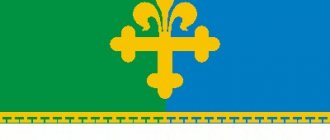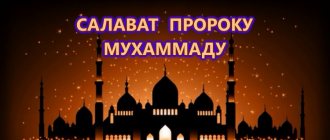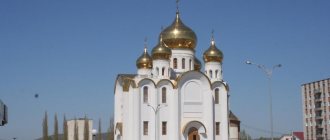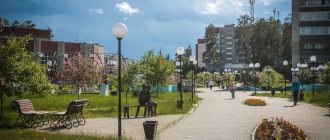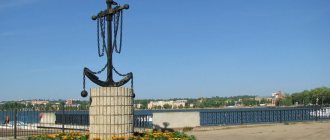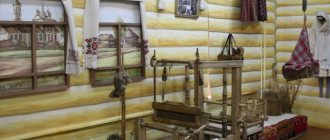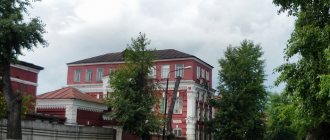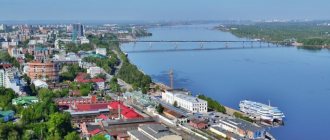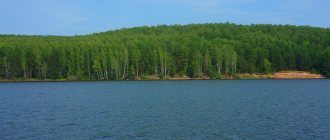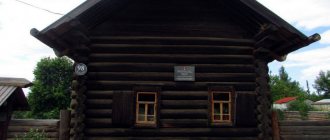Characteristics of the city of Salavat Republic of Bashkortostan
Salavat (Republic of Bashkortostan) is an industrial city on the map of Russia with a population of approximately 165 thousand people. The largest and only chemical enterprise in the country, the Salavat Chemical Plant, is located here, producing heptyl rocket fuel.
In terms of area, the city ranks 3rd among the settlements of Bashkortostan and second in terms of production volume.
The city at the present stage
155 thousand people live in Salavat
.
The population is very heterogeneous. Both in terms of social status, and in terms of national composition, and in terms of level of education. The main population of the city are Bashkirs, Russians, and Tatars. But there are also many people of other nationalities. These are Chuvash, Udmurts, Armenians, Georgians, Azerbaijanis, Kazakhs, Ukrainians, Vietnamese, Uzbeks, Tajiks, Jews. By the way, the Jewish community of Salavat even has its own website. In general, Salavat is a multinational city, like the whole of Russia. The city has 26 schools, several vocational schools, several branches of institutes, 1 theater, and newspapers are published in Russian and Bashkir. The city’s coat of arms depicts a kurai flower on a green background at the top, Salavat Yulaev on a horse at the bottom left, and the emblem of the city-forming enterprise OJSC Salavatnefteorgsintez
.
The city's main businesses are described on this page.
Important dates in the history of Salavat
The name of the city was given in honor of the national hero Salavat Yulaev, whose cavalry, according to the historical monument, passed through the area of modern Salavat at the beginning of the Peasant War in the fall of 1773.
The reasons for the formation of a new city - Salavat - on the map of Russia are the discovery of oil fields in the neighboring city of Ishimbay, the need for the production of fuel and refined oil products, and its close location to the Belaya River.
- 1947 - relocation of the Montenegrin petrochemical plant No. 18 to Salavat for fuel production (modern name Gazprom neftekhim Salavat).
- June 30, 1948 – founding of the village of Salavat (New buildings).
- 1952 – opening of the first vocational school.
- June 12, 1954 - the village of Salavat was given the status of a city.
- 1956 – construction of the railway station.
- 1962 – start of construction of the Salavatsteklo enterprise.
- 1966 – construction of Novo-Salavatskaya CHPP.
- 70s - construction of cinemas and the Sports Palace.
- 80s - construction of cultural centers, a water supply network providing the city with drinking water from underground sources.
- The 90s - the beginning of the construction of a number of religious institutions: churches and the Salavat Cathedral Mosque.
60s
In 60-64, residents were given free land (6 acres each) for vegetable gardens (Michurinsky) along the Belaya River. The construction of houses (booths) there is strictly regulated. Salavat Music College opened. The city has been gasified. In apartments, stoves and kerosene stoves were replaced by gas stoves. Chimneys have been removed from the roofs of apartment buildings.
In 1962, the Salavat technical glass plant (SZTS) (Salavatsteklo) was put into operation. The plant's first product, staple fiberglass in rolls, was produced and shipped to consumers.
In 1964, the Neftekhimik Cultural Center was built - the Neftekhimik Palace of Culture (Salavat). In 1969, V. Messing gave hypnosis sessions here.
In 1966, the Novo-Salavatskaya CHPP was built. The capacity of the first stage of the thermal power plant was 50 thousand kW.
The construction of five-story brick houses and panel “Khrushchev” buildings began. In 1967, the first nine-story buildings were built. The construction of the Salavat glass factory and buildings for the production of thermoses continues. Special regime correctional colony No. 4 with 1,200 beds was built.
A cable-stayed pedestrian bridge was built across the Belaya River (inaccessible link), Culture and Leisure Park (Salavat), and the 50th Anniversary of October Stadium. The bridge allows you to develop recreation areas across the river. Before the construction of the bridge, the river was forded in the summer if necessary. At that time, residents from the surrounding villages crossed the ford in horse-drawn carts.
Beyond the Belaya River, on the site of quarries left after the extraction of gravel for city construction, large lakes formed. These lakes became a watering place for local residents' herds of cattle.
Salavat on the map of Russia: geography, nature and climate
The city is located 160 km south of the capital of the republic - Ufa.
On the map of Russia you can see that on the left side Salavat is surrounded by a large river artery of Bashkortostan - the Belaya (Agidel) River. Another water body located directly within the city is Lake Kurbalykul.
In the late Paleozoic era, there was a sea basin on the territory of modern Salavat. This is evidenced by sedimentary rock deposits in the form of gypsum, sandstone, clay, and limestone. 50 km from Salavat there are unique natural monuments - the shikhans of Toratau, Kushtau, Shakhtau and Yuraktau, the formation of which also dates back to the period of the existence of the sea.
Oil deposits have been found in the vicinity of the city. Before the discovery of oil fields, the territory of Salavat was a steppe.
The climate of the area is moderate continental with a high level of humidity - warm summers and long, snowy winters. The average temperature in July is 19.4 °C, in January -13.9 °C. The maximum temperature in July was recorded in 2011 and was +39.3 °C. The maximum temperature of the cold period fluctuates at −48.2 °C. An average of 576 mm of precipitation falls annually in Salavat. The wind is mainly westerly. Frequent fogs are associated with the city's low-lying location.
Medicine
Tumor dispensary and infectious diseases department of the hospital in the city of Salavat
Until the end of 1950, there was no obstetric service in the city of Salavat. Pregnant women, women in labor and postpartum were served by the maternity hospital in the city of Ishimbay. From the end of 1950, 2 obstetric beds were set up in Salavat in a barracks at the Sanitary Department of the Plant Administration, which operated until February 1954.
On February 22, 1954, the maternity ward was opened at the medical unit of plant No. 18. In July 1954, gynecological beds were allocated in the same building. In 1955, 75 beds were deployed: obstetric – 50, gynecological – 25. 1961 – a gynecological department opens on the street. Northern with 50 beds. 1962 – the observational maternity ward at the SMZ Medical Unit opens for the first time. In 1962, only 165 beds were deployed in the city: obstetrics - 65, gynecological - 90.
Currently, the city has two city hospitals, surgical departments, a children's city hospital, dental clinics, a tuberculosis clinic, emergency rooms, clinics, dispensaries, etc.
Routes on the map of Salavat. Transport infrastructure
The detailed map of Salavat with streets and houses also shows important transport networks: buses, trams, railways.
Bus service is provided by the Salavat bus station (Ufimskaya, 33). There are suburban, city and intercity bus routes. The federal highway R-240 Ufa-Orenburg .
through the Salavat railway station (Vokzalnaya, 2A) of the Kuibyshev Railway; commuter trains to Sterlitamak, Kumertau.
Public transport includes buses and trams. Tram lines are located in the western part of Salavat, on which 55 trams run daily.
The section of the Belaya River near the city of Salavat is shallow, which does not provide opportunities for the development of water transport.
Crime
Oddly enough, Salavat is one of the most criminal cities in Bashkiria! Residents of Sterlitamak, Ishimbay, Ufa, etc. are afraid to contact Salavat residents. Such a bright, sweet and seemingly harmless provincial town has a downside to the coin. And it’s not known where all this “banditry” comes from - either it’s in the roots (the first residents - the builders of the city, almost all were prisoners), or they love their town so much that they don’t want to let uninvited guests into their world. However, the fact remains that there is crime, although not on such a scale as, for example, in Chicago. No, no one is killed here every day. So, they wave their fists and disperse.
Rumor has it that in the dashing nineties, Salavat ranked third in crime in Russia. Shots were fired in the streets, residents were even afraid to go to the store. Previously, each district had its own group. These groups differed in name, their content was the same - they were all gopniks. Usmanovsky, Sadovsky, Orionovsky, Dzhiforsovsky, dvadtsadka, Pokrovsky, Ilizarovsky, Dygalovsky, dark, bamboo, Baybakovsky, Borodovsky, Lisovsky - as soon as they called themselves. Now, however, they have all sunk into oblivion. They commit crimes quietly.
In the evenings, young people wander around in gangs, looking for those who will provoke a conflict. Well, they like to work with languages here, to take them “at their word” or “to show off.” And, by the way, the whole company is also responsible for their words. The principle “one for all and all for one” applies here. They'll beat you in the face for your own sake and leave you without teeth, or even without a wallet. Showdowns often occur at night discos, when companies from other cities come to hang out. When there are no strangers, battles take place among our own, or rather between regions. Who is better and who is worse is revealed in brutal fights. This is especially true for informals, of whom there are also plenty here, by the way. They also go in groups of several people - this way they have a chance to fight off the local criminals.
In general, there is never a dull moment here. When going out into the street, and even more so outside your neighborhood, you need to be prepared for anything. But despite this, many people like their hometown and don’t know how they would live without all these showdowns and fights. Well, they don’t like silence and splendor in Salavat. They should make some noise.
Sights of the city of Salavat
On the map of Salavat, along with houses and streets, there are places that symbolize this city and tell about its history.
Museums
- Salavat Museum of History and Local Lore
The museum was created in 2009. The museum exhibits represent the main milestones in the history of Salavat. Excursions and thematic events are held, films and cartoons are shown.
Address: Pervomaiskaya, 18
- Art Museum
Mostly works by local artists are presented here. They can be purchased to add to your art collection. Art and photo exhibitions are held.
Address: Pervomaiskaya, 3
Theaters and palaces of culture
- Salavat State Bashkir Drama Theater
The theater's repertoire includes performances in the Bashkir language with simultaneous translation into Russian, as well as children's productions based on famous works.
Address: 30 years of Victory, 5.
- Palace of Culture "Neftekhimik"
The building is listed as an architectural monument. The program of events includes performances by creative groups, folk ensembles, clubs, including a KVN team. The museum of the Gazprom neftekhim Salavat enterprise is located in the palace building.
Address: Lenin Square.
Temples and cathedrals
- Salavat Cathedral Mosque
Built in the 90s, the cathedral mosque impresses with its size and elegant architecture. The New Year according to the Muslim lunar calendar opens with a competition to identify the best reciters of the Koran and experts in Islamic traditions.
Address: Gubkina, 5
- Holy Assumption Cathedral
Daily services are held. There is a Sunday school. The architecture of the building will not leave connoisseurs of beauty indifferent.
Address: Ufimskaya, 35.
Monuments
- Stele to Salavat Yulaev
A rider on a flying horse meets and sees off the guests of Salavat. The obelisk was erected in honor of the national hero, whose name the city is named.
Address: entrance from the northern part.
- Bust of Alexander Matrosov
The monument was erected on the boulevard, also named after the hero, on an area landscaped for recreation for citizens.
Address: Matrosova Boulevard.
- Tank T-34
A real tank of the 1941 model is installed in the memorial complex near the Eternal Flame.
Address: Salavat Yulaev Boulevard
Interesting places on the map of Salavat
- Central Park of Culture and Leisure
The park has children's playgrounds, a fitness center, bicycle paths, and a landscaped pond.
Address: st. Key.
- Embankment of the Belaya River
A favorite place for townspeople in the summer. Fans of extreme sports can organize river rafting.
Extraordinary adventures and travels of Salavat
People of the older generation, of course, remember the magnificent bust of Salavat Yulaev by Tamara Pavlovna Nechaeva, which stood in Ufa on the steep bank of the Belaya, in the garden named after the hero. The image of the warrior and poet, embodied in bronze, seemed to have forever found its place.
Opened in 1952, it is very popular with Ufa residents and guests of the city. Flowers were brought to Salavat, pioneers were solemnly accepted here, and concerts were held. People loved to relax in the cozy garden back then. Elderly people, leisurely, walked along the shady alleys or sat on benches, together with Salavat admiring the magnificent view of Agidel, young people could dance, play volleyball, chess, children could ride on the carousel, there was also a stage. There were no problems with food here either: a cozy cafe with a large terrace, kiosks with water and ice cream. Well, then everything began to disappear: the cafes and kiosks were demolished, the carousel stopped working - the garden began to lose its face.
In 1969, in connection with the 100th anniversary of the birth of N.K. Krupskaya “Salavat Garden” was renamed “Garden named after. N.K. Krupskaya." I don’t know, maybe the “city fathers” considered that the memory of Nadezhda Konstantinovna was not sufficiently immortalized in Ufa, where there is Krupskaya Street and at that time there was a library named after. N.K. Krupskaya.
Probably, those in charge considered Salavat’s presence in the garden, deprived of his name, to be illogical, and the bust was transported to the garden named after him. Lunacharsky (now the garden named after S.T. Aksakov), and so that there would be no contradictions between Lunacharsky and Salavat, they found a “cozy” place for the national hero... under the porch of the old summer theater building, fortunately there he was reliably hidden from prying eyes. Here he was accidentally found by the ubiquitous Gazim Shafikov. And although the “new owners” assured that this was not the bust at all, but only a model, Gazim Gazizovich, who decided to find out everything, found Tamara Pavlovna Nechaeva and brought her to the defeated Salavat. What mother does not recognize her child! One look from the sculptor was enough to make sure that it was He. Now there is no need to remember what Tamara Pavlovna experienced, because after a long time, when meeting her, touching on this sad event and seeing the excitement that gripped her, I did not dare to question in detail and “open the wounds” of the mother-creator.
What happened next? Having committed this act of vandalism, outraged the monument and people's memory, the organizers and perpetrators of this dirty deed probably did not think about the consequences. Or maybe they were preparing some other meanness. Don't know. But at this time his fellow countrymen came to Salavat’s rescue.
There lived in Maloyaz (the regional center of the Salavat region) a very interesting person - Abuzyar Khakimyanovich Sayfullin, a passionate supporter of Salavat. A passionate local historian, for many years he collected documents and other materials related to the Pugachev uprising, various exhibits, gave lectures, organized excursions, etc. With his help and largely thanks to his enthusiasm, a small local history museum was created in Maloyaz, and then The construction of the Salavat Yulaev Museum has been completed. Twice Saifullin visited Paldiski, the place where the hero died. Shortly before his death (Abuzyar Khakimyanovich died in 1996), he was awarded the title of Honored Worker of Culture of the Republic of Belarus.
He said the following. “It was in the summer of 1971. Now I don’t remember which of the leaders of our district told me that the bust of Salavat Yulaev was removed in Ufa and was not installed anywhere. We decided to bring it to the region, although we already had such a bust in the center of Maloyaz. (I dare not fail to note that the bust of Salavat, located in Maloyaz, repeatedly “changed its registration.” On November 7, 1952, when it was inaugurated in the square near the house of culture, then it “moved” to the park near the house of culture, then went to vocational school area - we laid flowers there on the opening day of the Salavat Yulaev Museum in 1991, and then this bust was installed in the lobby of the Salavat Yulaev Museum. - V.S.
).
Our superiors made a preliminary agreement with the leadership of the regional committee and the Council of Ministers of Bashkiria. They told me to contact the Ministry of Culture. They gave me a truck and I went. In Ufa I came to the Deputy Minister of Culture, he called the city executive committee and sent me there to draw up documents. I left a power of attorney with the city executive committee, which I received from the culture department of the executive committee of the Salavat district council, and from them I took a document to receive the bust from the warehouse of the Lunacharsky garden. (I quote the text of this document, a copy of which is in the Central State Archive of the Republic of Belarus: “Order No. 225-r. 07/21/71 on the transfer of the monument-bust of Salavat Yulaev from the city of Ufa to the Salavat district.
In order to perpetuate the memory of Salavat Yulaev in his homeland "transfer free of charge the monument-bust of S. Yulaev to the executive committee of the Salavat District Council of the Bashkir Autonomous Soviet Socialist Republic from the Lunacharsky garden. Deputy Chairman of the executive committee of the Ufa City Council of Workers' Deputies R. Saifullin."
The Ufa City Executive Committee made such a “magnanimous” gesture based on the principle “it’s not good for you that it’s not good for us.” — V.S.
).
I arrived at the garden, found the storekeeper, gave him the documents, and signed for receipt. The bust was located under the porch of the summer theater. We took it out of there, cleaned it of dirt and dust, loaded it into the back of the truck on a soft bedding and took it home. Salavat was sheltered by the head physician of the Yangantau sanatorium, R.Sh. Akbashev, thanks to him.”
About all this in March 1989, I wrote an article “The Extraordinary Adventures and Travels of Salavat,” not knowing what “extraordinary adventures” awaited her. Wanting to attract more readers, I submitted the article to Vechernyaya Ufa, the newspaper with the largest circulation. The material was favorably received and quickly typed, but at the last moment, when it was already standing in the issue, editor-in-chief Ya.B. Khusainov, a very cautious person and, unfortunately, very unobligatory, removed it, motivating his decision by the fact that these days the 70th anniversary of the Bashkir Autonomous Soviet Socialist Republic was celebrated and my material did not fit “into the anniversary celebrations.” Having received a proof of the article as a keepsake and a promise to publish it soon, I waited six months and then gave it to another Russian-language newspaper, where it was also received with enthusiasm and the promise of quick publication. Another six months passed... Friends advised me to contact the republican youth newspaper “Yashlek”, published in the Bashkir language and, unfortunately, with a small circulation. Three days later the article was published! The first responses appeared. Soon this material was published in Izvestia Bashkiria, and then my appearances took place on radio and television.
I began to receive many letters from Ufa, other cities and regions of Bashkortostan. Their authors are people of different ages and professions, from schoolchildren to pensioners, from professors to mechanics, agricultural workers, Russians, Bashkirs, Tatars, Ukrainians, Chuvashs, etc. What is common to all letters without exception is sincerity. One feels that they were written from the soul, from the heart, as they say, in one breath. They were united by the memory of the past, love for the national hero, warrior and poet Salavat Yulaev. However, to my surprise and regret, many, especially young people, have never heard of either the “Salavat Garden” or the monument to the batyr that was erected there and then demolished. Nevertheless, everyone demanded the restoration of the monument in its original place and the return of the garden to the name of Salavat.
Bust of Salavat in the Yangantau sanatorium
Soon after the radio broadcast, a resident of Ufa, Rimma Nurievna Buranbaeva, who witnessed the destruction of the monument, called me. Here's what she said.
“When we were young, we really loved to walk in the Salavat Garden; it was very cozy and homely. And then one hot summer day, it was in 1969, my friend Nina Urazaeva and I came to the garden on our favorite bench, next to Salavat. We sat and talked. Suddenly a cart arrived with three men in it. They took crowbars, approached the monument and began hitting it, trying to separate the bust from the pedestal. We ran up to them, I shouted: “What are you doing!” But what did two young girls mean to these “performers?” There was no one nearby, and even if there had been, what would have changed. The blows rained down, but Salavat did not give up, did not want to leave the place that had become home to him. But force won, Salavat was thrown off, then he was loaded onto a cart where straw lay and taken away. After that the garden became orphaned, and we never went there again.”
But, probably, almost also on a cart with some straw, on October 3, 1775, Salavat Yulaev was sent from Ufa to eternal hard labor in Estland. True, then the hero was accompanied by a reinforced escort, but in our time an “honorary escort” of three men with crowbars was sufficient.
Many letters contained a request, or rather, a demand, to name specific people who “signed the verdict” on the monument to the national hero and authorized the renaming of the “Salavat Garden” to the “Garden named after. N.K. Krupskaya."
Unfortunately, I could not give an exact answer, although I tried to find out. The archival files of that time of the Ufa City Executive Committee, the Ministry of Culture, the Ufa City Committee of the CPSU and, finally, the Bashkir Regional Committee of the CPSU were reviewed, but, alas, there was no documentary evidence of this vile action. However, there were Resolutions of the Council of Ministers of the RSFSR No. 1327 of August 30, 1960 and the Council of Ministers of the BASSR No. 188 of March 22, 1961, which stated that “the bust of Salavat Yulaev as a monument of art was taken under state protection” (!). I talked to some people who worked in party and Soviet bodies in the 60s, but they couldn’t say anything definite. Perhaps, of course, there are relevant documents somewhere, but I could not find them. Therefore, I will only make an assumption that there could have been either a “volitional decision” or an oral order from an influential person or persons. At that time, the first secretary of the regional committee of the CPSU was Z.N. Nuriev, first secretary of the Ufa city committee of the CPSU - M.Z. Shakirov, Chairman of the Ufa City Executive Committee - S.S. Voroninsky. Could they (or any of them) know about this? Or, more precisely, could they not have known? You could, of course, ask them too. But I had no desire to communicate with them (and it is unlikely that they would have wanted to meet with me), because with the “blessing” of these persons, many memorable places and relics of Bashkiria and Ufa were destroyed, irreparable damage was caused to human memory. And to lose your memory means to lose your homeland. Could there be anything worse than this!
There were so many letters from readers, television viewers and radio listeners that I physically could not answer them. Therefore, a special broadcast was made on the radio, in which I tried, if possible, to give answers to questions and expressed my opinion about the future fate of the bust, which coincided with the opinion of many Ufa residents and residents of Bashkortostan.
So why was Salavat removed? I believe that the organizers of this dirty business - high-ranking zealous officials - were guided by the following motives. Since Lenin, Krupskaya and revolutionary friends were walking in the park on Sluchevskaya Mountain in 1900, this event must be immortalized, and all “outsiders” like Salavat must be removed from the “sacred place.” Or maybe they thought that Salavat alone was enough for Ufa, meaning the equestrian sculpture by S.D. Tavasieva. But they “got along perfectly” on the same bank of the Agidel. Do they have different faces? So what. One is a pronounced warrior, the other is a warrior and a poet, I would even say a lyricist. Everyone is good in their own way. History has not preserved the appearance of Salavat for us, but every creative worker (in this case, I mean T.P. Nechaeva and S.D. Tavasiev) has the right to speculation and presents his hero as he imagines him. Well, what about artists in this case? After all, many people draw Salavat, and there is not a single one similar. And it happens that their works are nearby and “tolerate” each other very well. It is possible, of course, that there were some other reasons for the destruction of the bust, but I think my assumptions are the most likely.
Naturally, all reasonable people (I “modestly” consider myself one of them) demanded, as already mentioned, the restoration of the bust in its original place, and they insisted on doing this at the expense of those who authorized its destruction. Of course, Tamara Pavlovna Nechaeva was also for this. To the best of my ability, I tried to get things moving: I wrote letters, articles, spoke on radio, television, etc. Everyone seemed to agree and promised to help, but, alas, everything remained unchanged.
Years passed. Sometimes I checked with A.Kh. Sayfullina, how Salavat “feels”, whom he placed with the knowledge of the head physician in the warehouse of the Yangantau sanatorium “until better times.” Abuzyar Khakimyanovich invariably answered that Salavat was still “at home” and no one was bothering him. In September 1994, while in Maloyaz, I expressed a desire to see Salavat. Taking with us the editor of the regional newspaper (unfortunately, I forgot his last name), we went to the sanatorium. Fortunately, the warehouse was open, which made it possible to avoid delays, and Saifullin confidently headed to the corner where Salavat was wrapped in burlap. (The warehouseman, who had only been on the job for a few months, had no idea that there was a bust in the warehouse at all). We turned it around. During his stay on his native land, he did not suffer at all and patiently waited for him to finally be brought into the light of day. I suggested paying a visit to the head doctor of the sanatorium. Ishtimir Shagaleevich Khuramshin, recently appointed to this position, warmly received us. He was sincerely surprised to learn that Salavat had been “staying” in the warehouse for twenty-three years, and promised to look into it.
The “showdown” took place in 1998. It was very, very difficult. I will not dwell on the details, especially since everything is still not clear to me; I will only note the most significant points. By chance I heard that a bust of Salavat was installed in the sanatorium, but it makes a strange impression. I called Tamara Pavlovna - she doesn’t know. Typical Russian carelessness and tactlessness! Obviously, they decided to present a “surprise” to the author by “publishing” her creation! What a blessing that Tamara Pavlovna did not see him. Knowing her character, her sensitive, easily wounded soul, I have no doubt that a massive heart attack would have been guaranteed for her.
So what did the old-new Salavat represent? Thank God, few saw him. I did not see. More precisely, I saw only the remaining pedestal - an obvious misunderstanding of “architecture”, on which, according to eyewitnesses, Salavat was erected. Obviously, the organizers decided to prepare him for the beauty contest at the same time and applied appropriate makeup, painting his eyes, eyebrows, etc. Fortunately, we still haven’t run out of smart people. One high-ranking official, seeing Salavat, was amazed: how could it be possible to “come to such a life”! And what is again typically surprising is that no one could answer: “Who could come up with this?” But still, a solution-answer was found: “The Turks are to blame!” The fact is that at that time Turkish workers were working in the sanatorium, and so and so they made such a Salavat! Well, who gave the command, exercised leadership, etc. - this information was not preserved in the “chronicles”.
Salavat was removed from his pedestal, washed, cleaned, in a word, prepared for a new relocation. And it happened quickly. Omitting the details, although there were some hiccups, I will note that this time the place was chosen well and, most importantly, they decided to involve Tamara Pavlovna in the work, although at the final stage. The summer of 1998 was very hot, but despite her poor health, she spent whole days near Salavat, supervising the work. She remembers with gratitude Ishtimir Shagaleevich Khuramshin, who created very good working conditions for her and generally did a lot to establish the bust.
Salavat has, hopefully, found a permanent place. He looks really, really cool. As they say, all's well that ends well. And many thanks to everyone who contributed to this. But in my memory that Salavat, whom I saw in 1952 in the garden above Belaya and perceived as the very first
which is never forgotten.
| Previous page | To contents | Next page |
Territorial structure of Salavat
The local population is accustomed to dividing the city into new and old. On the map of Salavat with streets and houses, the northern part is the Old Town. The new city begins with the prestigious microdistrict Zhelanny.
The city center is Lenin Square with the administration building. Territorial units - blocks and microdistricts (51st quarter, 48th quarter, 7th microdistrict, Mars microdistrict, etc.)
In the northern part of the city there are old buildings. The central district has Lenin Square, where the administrative building is located.
The eastern part of the city is considered a comfortable area.
The main street of the city, Lenin, stretches from the square.
All important city streets start from the central area. All cultural attractions of the city are located on Dzerzhinsky, Gagarin and Pervomaiskaya streets.
Demonstrations and rallies
Worker demonstrations were annual events in the city. The first demonstrations in the 40s took place on the street. Builders. In the 50s, with the completion of the construction of the Rodina cinema - on the square. Stalin (Komsomolskaya), from the 60s - on the square. Lenin. Demonstrations took place on holidays - workers' solidarity on May 1 and the anniversary of the Great October Socialist Revolution - November 7, with the introduction of the Victory Day holiday on May 9.
To hold rallies on the square. Stalin, a temporary wooden platform was installed on the square. Lenin, a now destroyed stationary stand was built in front of the administration building. The houses on the square were decorated with portraits of current members of the Politburo and General Secretaries of the CPSU, K. Marx, F. Engels, V. I. Lenin.
The demonstrations began at 10 a.m. with a brief speech by the first secretary of the city party committee and city leaders. Why did the procession of columns of groups of enterprises, schools, technical schools, and sports sections begin? Columns of workers were accompanied by cars equipped with posters. The squares on the street side were blocked off by trucks. The most interesting were the columns of athletes who formed various figures in the square, artists on trucks in the image of Lenin and Salavat Yulaev. The demonstrations were accompanied by the reading of slogans printed in advance in central newspapers and patriotic music. The people were called upon to fight for peace, fulfill and exceed the five-year plan targets, and do good studies. The achievements of the working people were supposed to clearly demonstrate the advantages of socialism.
The most significant rallies were organized in the city in 1970 for the 100th anniversary of the birth of V.I. Lenin, in honor of the laying of messages to descendants in 2022, 2022 in celebration of the 100th anniversary of the Great October Socialist Revolution (1967) and the birth of the Komsomol in 1968 year, on the days of celebrating the 40th, 50th anniversary of the city of Salavat.
Currently, demonstrations are held annually in the city on Lenin Square on Victory Day. There is a procession of participants of the Great Patriotic War and theatrical performances.
Main streets of Salavat
The main streets of the city include the following:
- One of the beautiful streets is Pervomaiskaya . The walking alley stretches from the central square to the Rodina cinema.
- In the south of the city there is Salavat Yulaev Boulevard . Houses appeared on the street in the 80s. A map of Salavat by district will allow you to find the desired object in any part of the city. On the street there are clinics, a shopping center, and many different shops. This boulevard intersects with Ostrovsky and Lenin streets.
- In the new part of the city there is Oktyabrskaya Street . Along it there are mainly five and nine-story buildings. The street passes through the central region of the city, it intersects Klyuchevaya and Ostrovsky streets.
- The main and oldest street is considered to be Lenin . It houses a food market, a cinema and a large swimming pool.
- Industrialnaya Street runs through the entire city . It houses numerous offices and industrial buildings.
- Between the village of Musino and the dacha plots there is Zheleznodorozhnaya Street . A railroad runs through it. The railway artery leads to a woodworking plant.
- In the city center you can find Neftyanikov Avenue . It extends from the central square to Oktyabrskaya Street.
2000s
Wooden 2-story houses on Gorky Street are being demolished. Residents are moving into new, modern houses. The first floors of houses located on the central streets of the city are being converted into shops. A huge 2-story supermarket is being built at the central collective farm market, and a Gostiny Dvor supermarket is being built on Lenin Street. An ice stadium with artificial turf was built.
On April 19, 2000, by decision of the Presidium of the Salavat City Council No. 16/115, the regulations on the coat of arms of Salavat were approved. The Regulations provide a description of the coat of arms in both colloquial language and a “blazon” description. Authors of the coat of arms: Alexander Viktorovich Lavrukhin and Rivinir Timershaehovich Faezov.
The monument to Salavat Yulaev, standing in the park on Stroiteley Street, is moved to Yulaev Street. The monument is installed on a new, higher pedestal. In the children's park, a monument to Pushkin is being moved to its place. In 2003, the Memorial Complex “Land of Yurmaty” was opened.
The country has been in a financial crisis since 2008. Demand for the products of Salavat enterprises, especially OJSC Salavatnefteorgsintez (mineral fertilizers), fell sharply, which affected the level of wages and unemployment in Salavat.
Most of the city is covered by the Internet and cable television.
A ski slope with lifts and recreation buildings was built 15 km from the city on Mount Zirgantau.
On the site of demolished villages that fell into the zone of the SNOS petrochemical plant, the memorial complex Land of Yurmaty was built.
The construction of a mosque and an Orthodox church has been completed. In the village of Musino, a courtyard of the Pokrovo - Yennatsky monastery with a wooden church is being built.
In 2009, the Salavat Local History Museum opened in the building of the former Rodina cinema.
Authorities
The head of the city, the city council of workers' deputies, the city governing bodies of the CPSU and the Komsomol in Salavat were located in the building of the City Council, which is a cultural heritage site of the Russian Federation.
The highest official of the city is the head of the Salavat administration (mayor, since 2006 - head of the administration of the Salavat urban district). The leaders of the city of Salavat at different times were:
First Secretaries of the City Party Committee
- Yakimov, Vladimir Nikolaevich - until 1954, first secretary of the Ishimbay, from 1954 to 1959 - Salavat city party committee, deputy of the Supreme Council of the BASSR of the second convocation
- Anisimov Semyon Semenovich (1959-1963)
- Nikitin Gennady Mikhailovich (1963-1972)
- Aminov Leron Khalitovich (1972-1976)
- Khamzin, Farit Habibullovich (1976-1987)
- Bartenev, Evgeniy Konstantinovich (1987-1991)
Chairmen of the executive committee
- Subkhangulov, Sakhiula Shakirovich (1949-1954) - chairman of the executive committee of the village Council of Workers' Deputies
- Ishmukhametov, Raul Akhmetgareevich (1954-1963) - chairman of the executive committee of the city Council of Workers' Deputies
- Fatkulin, Khusain Agliulovich (1963-1970)
- Aminov Leron Khalitovich (1970-1972)
- Bogdanov Ivan Antonovich (1972-1986)
- Galiev, Asgat Talgatovich (1986-1991, 1999-2002)
- Bartenev, Evgeniy Konstantinovich (1991-1997)
- Nikolaevsky S. A. - (1997-1999)
- Ishkinina, Fina Sarvaretdinovna (2000-2003)
- Chernykh, Yuri Alekseevich (2005-2008)
- Mikhailov, Alexander Sergeevich (2008—2012)
- Davydova, Larisa Vladimirovna - Chairman of the Council of the Salavat Urban District since 2012.
Heads of the city administration
- Sigakov, Nikolai Ivanovich (1997-1998)
- Alimov Yuri Borisovich (2002-2004)
- Parshikov Gennady Petrovich (2005-2008)
- Rakhimov Khalil Khalyafovich (2008-2009)
- Buharmetov, Radik Mazgarovich (2009-2011)
- Gilmanov, Farit Farrakhovich (since 2011)
In accordance with Part 6 of Article 37 of the Federal Law “On General Principles of the Organization of Local Self-Government in the Russian Federation”, Part 10 of Article 12 of the Law of the Republic of Bashkortostan “On Local Self-Government in the Republic of Bashkortostan” and Part 8 of Article 21 of the Charter of the Urban District of the city of Salavat of the Republic of Bashkortostan, the head of the Administration The urban district of the city of Salavat of the Republic of Bashkortostan is appointed by the Decision of the Council of the urban district of the city of Salavat.
Flora and fauna
In the 50-60s, you could often see cows and horses grazing in the city. Peasants came to the market in horse-drawn carts to trade. Currently, cattle are kept mainly by Belaya.
In summer, swifts and swallows fly in large numbers in the city. The reason for this is the abundance of insects and the structure of the roofs, in the plumbs of which nests can be built.
The territory from the plant to the city is densely planted with trees for recreational purposes. Blackberries and bird cherry grow in large quantities in the area of the Belaya River. The banks are overgrown with poplars and willows. Closer to the mountains there are a lot of rose hips and wild cherries.
In the 70s, poplars in Salavat were gradually replaced by other types of trees - linden, rowan, birch and pyramidal poplars.
In 2010, as a result of abnormal heat and drought in Salavat, a large area of coniferous forest dried out in the area of the Belaya River.
The flora of Salavat in 2012 included 4 species listed in the Red Books of the Republic of Bashkortostan and the Russian Federation (S. korshinskyi, S. pennata, S. pulcherrima, Tulipa biebersteiniana), as well as 2 endemic ones (A. wolgensis, Lathyrus litvinovii ) and one relict (Carex pediformis) species. In addition to the “Red Book” species themselves, two species are noted that are not included in the Red Book of the Republic of Belarus, but are included in the list of objects that require special attention to their state in the natural environment and monitoring on the territory of the republic. These are Ephedra distachya and Inula helenium.
The rarest plant species are located in the floodplain of the Belaya River and on the steppe slopes near Salavatsteklo OJSC. The vegetation of these places is represented by the surviving remnants of various variants of steppes in places inaccessible for economic activity. The flora includes three rare species listed in the Red Book of the Republic of Belarus and the Red Book of the Russian Federation and one species that requires special attention to the state of the natural environment and monitoring on the territory of the republic, two endemic and one relict species. These habitats are characterized by the presence of a large number of species, the range of which in the flora of Salavat is limited only to these ecotopes. Examples of such plant species include Allium strictum, Aster amellus, Astragalus macropus, Carex supina, Centaurea sibirica, Stachys recta, etc.
